Instructional Series
This site will be closing soon as its content has moved to Tāhūrangi.
2024 titles are available on Tāhūrangi. Use the filters to find specific series.
Find Literacy resources at Tāhūrangi - Literacy.
Welcome to the English medium literacy instructional series teaching and learning resources for years 1 to 8.
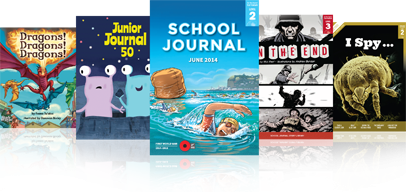
- 4
- 3
- 2
- 8
- 5
- 4
- 6
- 7
- Social Sciences
- English
- Health and Physical Education
- The Arts
- Non-fiction
- Fiction
- None
- Articles
- Stories
- Poems
Search results
33 items - Showing 21 - 30
-
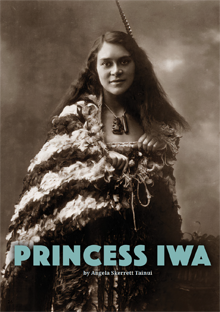
Princess Iwa
by Angela Skerrett Tainui
Meet the young woman from Bluff who shared her culture on the world stage.
One day, many years ago, I was visiting my pōua when I noticed a photo of a beautiful wahine on the wall. She had long, wavy hair and wore a kākahu around her shoulders and a hei tiki around her neck. She looked to be about eighteen.
-

King and Country
by André Ngāpō
illustrations by Andrew Burdan
This fictionalised story is based on the controversial issue of Māori fighting for the British Empire during the First World War. Students will need some knowledge about the history of our race relations and, in particular, the colonisation of Aotearoa by the British.
-
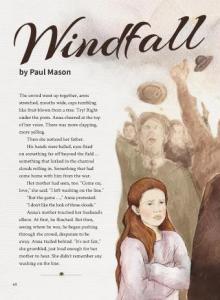
Windfall
by Paul Mason
illustrations by Leilani Isara
Anna’s father has come home from the war – or has he?
-

Mascots
by Jenny Bornholdt
-
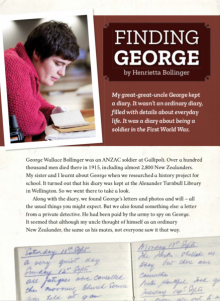
Finding George
by Henrietta Bollinger
In this powerful and moving article, Henrietta Bollinger tells the story of her great-great-uncle George, a soldier in the First World War. Most students will have learnt something about the First World War, and many will know something of their own family stories.
-
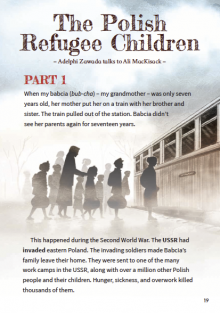
The Polish Refugee Children
by Ali MacKisack
This true story of Adelphi Zawada’s grandparents will be engaging for students in year 4, although it is complex and presents some interesting challenges. Adelphi tells how her grandparents, as children, along with over a million other Polish people, were sent to work camps in Russia following the invasion of their country by the USSR during the Second World War.
-
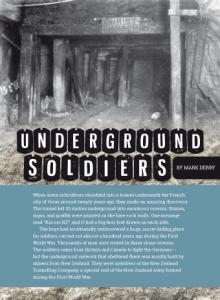
Underground Soldiers
by Ashleigh Young
In a straightforward report (supported with period photographs, a map, and a detailed diagram), this article shows the huge risks that were taken by New Zealand tunnellers during the First World War. The job of the tunnellers was to attack German positions from underground and so reduce the risks to Allied soldiers in no-man’s land. The tunnels also provided areas where wounded soldiers could be treated.
-
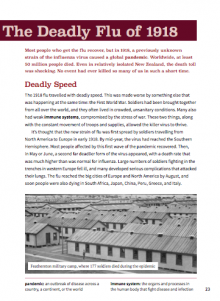
Pandemic: The Deadly Flu of 1918
by Renata Hopkins
Most students are aware of New Zealand’s participation in the First World War, but few will know of the flu pandemic that swept across the world in its aftermath. In New Zealand, the epidemic took over nine thousand lives in under two months – an appalling number, especially if compared with the eighteen thousand soldiers whose lives were lost to the war. This article conveys the horror of the event while imparting factual information about how the virus spread and how the government and communities tried to deal with it.
-
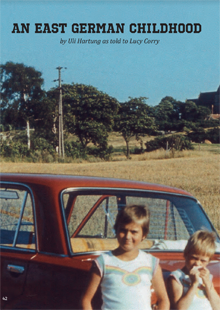
An East German Childhood
by Uli Hartung as told to Lucy Corry
Uli Hartung was seventeen years old and living in East Germany when the Berlin Wall came down.
-
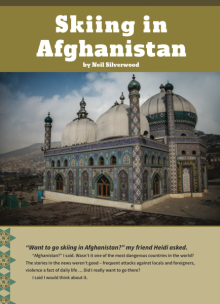
Skiing in Afghanistan
by Neil Silverwood
"'Want to go skiing in Afghanistan?' my friend Heidi asked. 'Afghanistan?' I said. Wasn’t it one of the most dangerous countries in the world? The stories in the news weren’t good – frequent attacks against locals and foreigners, violence a fact of daily life ... Did I really want to go there? I said I would think about it."








 Literacy Online home
Literacy Online home
